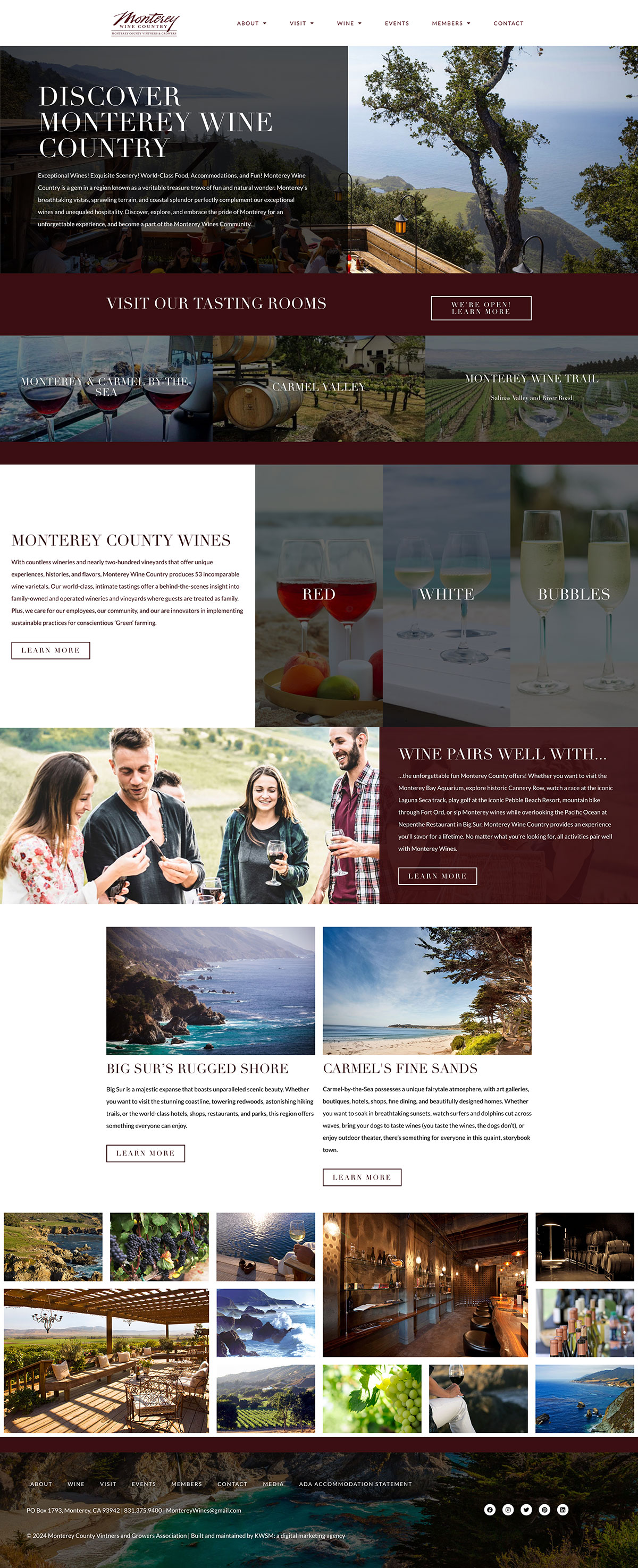
What should be included in Brand Messaging, and why is it essential to your Digital Marketing Strategy?
Trying to market your brand without defining your audiences and message first is one of the most effective and least fun ways to lose money that we know of.
If you want your brand to reach audiences who need what you’re offering, you need to be able to explain why your offer is right for them and why they should choose you over the competition.
That’s why Brand Messaging is an essential element in our Digital Marketing Strategy process, and every Brand Message contains the same four components:
- Voice and Tone
- Audience Messages
- Primary Message
- Home Page Copy & Design
But as we mentioned above, none of this is possible without knowing who you’re talking to and how your brand should be positioned to help them. So before we get into the components of Brand Messaging, we need to define our audiences first.
Define Your Audiences First
If you’re going to write messages that appeal to the best audiences for your business, it’s important to know who those audiences are first.
Lots of Digital Marketing Strategies start with basic demographic information like age, gender, location, vocation, etc. This is important for targeting purposes – you don’t want to advertise to Australians if you only sell products in Canada, for example – but a compelling message will require more depth than that.
You’ll also need to identify the pain points that would lead these audiences to seek out your business, as well as the differentiators that will set you apart from the competition in their eyes. Without this deeper understanding, you won’t be able to cut through the noise with a story that compels prospects to take action.
Once you’ve defined your primary audiences – most businesses have at least two, some as many as five or six – you can start creating the brand persona and messages to reach those audiences.
1. Brand Messaging Voice and Tone
When you understand who your target audiences are and what pain points to address, it’s time to start crafting your messages. Almost.
Before you decide what to say, it’s important to establish how you want to say it. In fact, all of our Brand Messaging guides begin by defining three or four fundamental feelings or concepts that will inform the messages and copy we create.
These traits reflect how the brand should be perceived and how team members should approach their interactions with customers.
Words like professional or credible, for example, are commonly used brand “voices.” They give language to the brand’s marketplace position and ability to solve a problem. Other concepts like empathetic, proactive, or passionate can fit this category too.
Also, these traits shouldn’t exist in a vacuum. Each one should include two or three sentences explaining why that particular concept is important and how it should be reflected in the messaging.
2. Audience-Specific Messages Included in Brand Messaging
Now that you know who your messages are for and how you are going to deliver them, it’s time to craft the actual messages.
For our Brand Messaging process, we create a unique message for each of the audience segments we defined. We’ll use the specific pain points and differentiators we identified to position our brand as the best possible solution.
These messages serve as a mini-narrative that positions the buyer as the main character on a ‘hero’s journey’ to overcome the pain points that they are suffering from. Each 200-300 word story hinges on the buyer encountering the brand, which is personified as a guide that leads them to success.
While these stories won’t appear word-for-word on a webpage or in a blog post, they should contain key phrases and sentences that can be converted into copy in outputs like websites and social media posts.
Value Propositions Included in Brand Messaging
When you’re defining your messages for your audiences, it’s essential to create a succinct version of your story that explains the problem and the brand’s solution in just a sentence or two.
We call this the Value Proposition. It should be able to function as an elevator pitch-style explanation of what the brand does and why.
3. Primary Message
Once you have messages for each audience, it’s time to put them all together into one cohesive story in the Primary Message. The Primary Message represents the story that your brand wants to tell as an ideal member of your target audience segments should hear it.
This section shouldn’t revisit every technical detail of the prospects’ various pain points and how the brand solves them. Instead, the Primary Message uses that background information to inform and empathize with how the audience is feeling. It also presents them with a vision of success that is possible with the brand’s solution.
This message, and the shortened Value Proposition that accompanies it, is especially useful for developing top-of-funnel content, such as a new website Home page or posts that educate cold traffic about the brand.
4. Home Page Copy and Design
Our final Brand Messaging component within a Digital Marketing Strategy is usually an interactive homepage design. This includes new website copy based on the messages developed above.
Each Brand Messaging element has a part to play here. The brand’s Voice and Tone will inform the user experience and design elements as well as the copy. Brands that want to reinforce credibility, for example, may choose to list certifications or associations higher on the page to meet that need.
Similarly, the pain points and differentiators identified in the Audience Messages will inform the copy related to specific services or offers for those audiences. Finally, concepts and phrases from the Primary Message will be useful for crafting headlines, calls to action, and other compelling features.
Would you like to reach customers with compelling Brand Messaging as a part of your Digital Marketing Strategy? Complete the form to contact us about creating a custom strategy of your own with KWSM.










